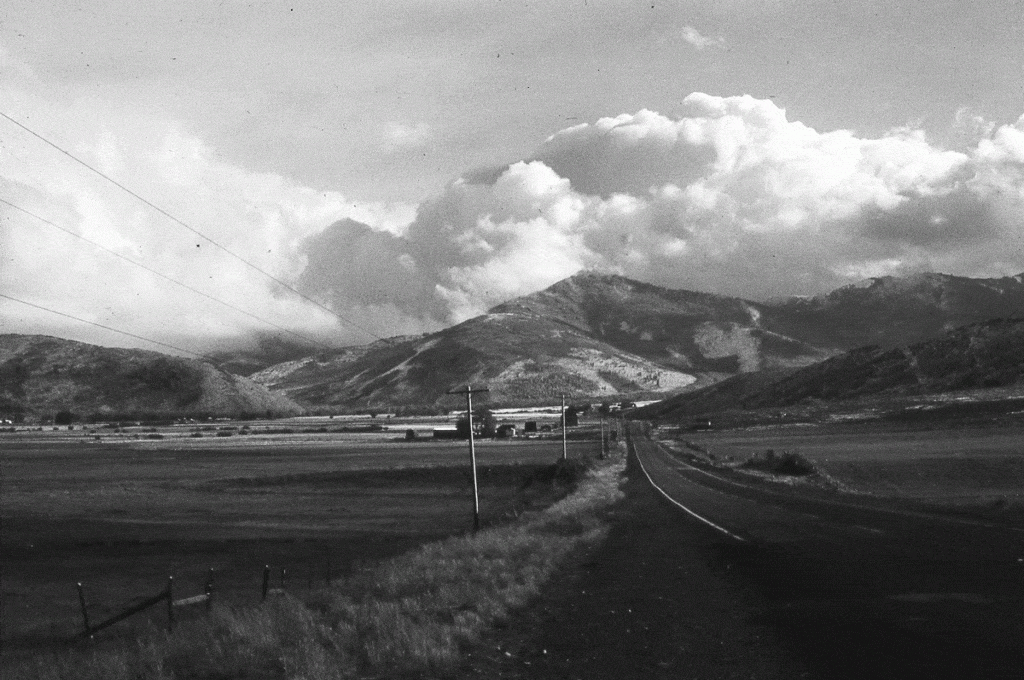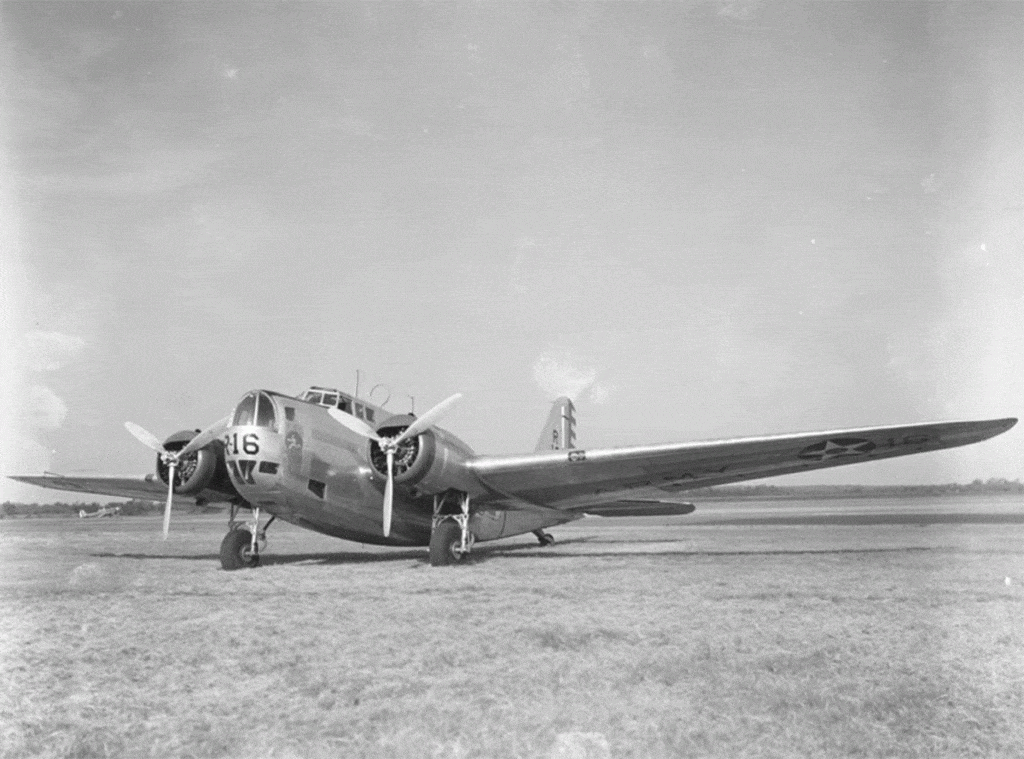Those of us fortunate enough to live full-time in Park City are accustomed to severe and abrupt weather changes. Storms can also involve economic and political disturbances. In this ensuing “Way We Were” series we’ll learn how economic, political and climatological events coincided to create a “Perfect Storm” culminating in the only fatal plane crash in Park City’s history.
On November 15, 1941, residents of Park City were enjoying unseasonably mild temperatures, though few complained. To most, snow was an inconvenience. Harnessing the economic value of the “Greatest Snow on Earth” was twenty-five years in the future. That Sunday began clear, calm and warm. It ended in a raging blizzard with deadly consequences: the crash of a military bomber on Iron Mountain. The crash occurred just after midnight on Monday, November 16, but the “Perfect Storm” began in the depths of the Great Depression.

Credit: Park City Historical Society and Museum, Carl Woolsey Collection
The Depression was not discriminatory. Park City coped as best it could, though layoffs occurred. Miners fortunate enough to work did so with a combination of reduced wages and hours. The most productive new mine in the town’s recent history – the Park Con – delivered significant amounts of high-quality ore during this era, unfortunately a time when metal prices were at historic lows.
Even the US military was not immune. America’s worldview at the time was decidedly isolationist, eroding support for a strong military. In this economic and political environment, weapons programs were curtailed or forced to operate with severe budget cuts. Under these circumstances, in 1934, the US Army Air Corps announced their intention to develop a new bomber. Three companies responded to this request: Boeing, Douglas Aircraft and the G.L. Martin Company.
Boeing submitted their Model 299. Though a prototype, this four-engine heavily-armed bomber was revolutionary. The plane was designed for long-range naval reconnaissance and combat. Martin submitted their Model 146, a modernized version of their existing B-10 twin-engine medium-range bomber. Douglas submitted their Model DB-1, a low-cost, twin-engine, lightly-armed and under-powered bomber.

Credit: Courtesy of Air Force Historical Research Agency, Maxwell AFB AL
The Boeing and Martin aircraft were superior to the Douglas DB-1 by every measure except price. Boeing’s plane was the best of the three – able to fly higher, faster, further and carry the heaviest payload, but this didn’t come cheap. The most expensive of the models, it was approximately three times the price of the DB-1. Boeing had another problem: during a demonstration, their one and only prototype crashed due to pilot error. The aircraft was a total loss. Boeing was officially removed from consideration.
Given the economic and political climate, military procurement officers awarded the contract to the lowest-cost bidder. Douglas Aircraft was selected to build 133 of their twin-engine “peacetime” bombers, which became known as B-18s. During the decision-making process, minimal consideration was given to either airworthiness or combat readiness. Why worry? The US was isolationist, far removed from the gathering war clouds in Europe and Asia. The end result: a bomber that was obsolete before it rolled off the assembly line.
Come back next week to learn about its deadly flight over Park City